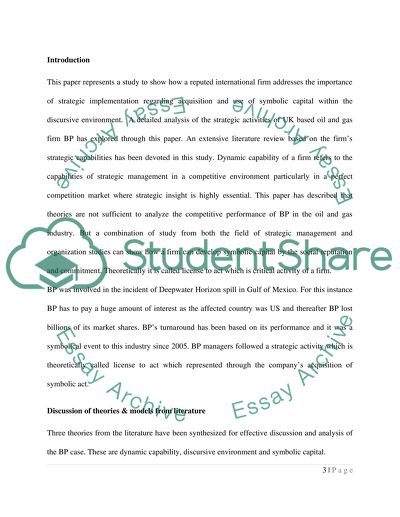Cite this document
(“Strategic Analysis of BP Research Paper Example | Topics and Well Written Essays - 3750 words”, n.d.)
Retrieved from https://studentshare.org/finance-accounting/1397397-bp-s-strategical-analysis
Retrieved from https://studentshare.org/finance-accounting/1397397-bp-s-strategical-analysis
(Strategic Analysis of BP Research Paper Example | Topics and Well Written Essays - 3750 Words)
https://studentshare.org/finance-accounting/1397397-bp-s-strategical-analysis.
https://studentshare.org/finance-accounting/1397397-bp-s-strategical-analysis.
“Strategic Analysis of BP Research Paper Example | Topics and Well Written Essays - 3750 Words”, n.d. https://studentshare.org/finance-accounting/1397397-bp-s-strategical-analysis.


